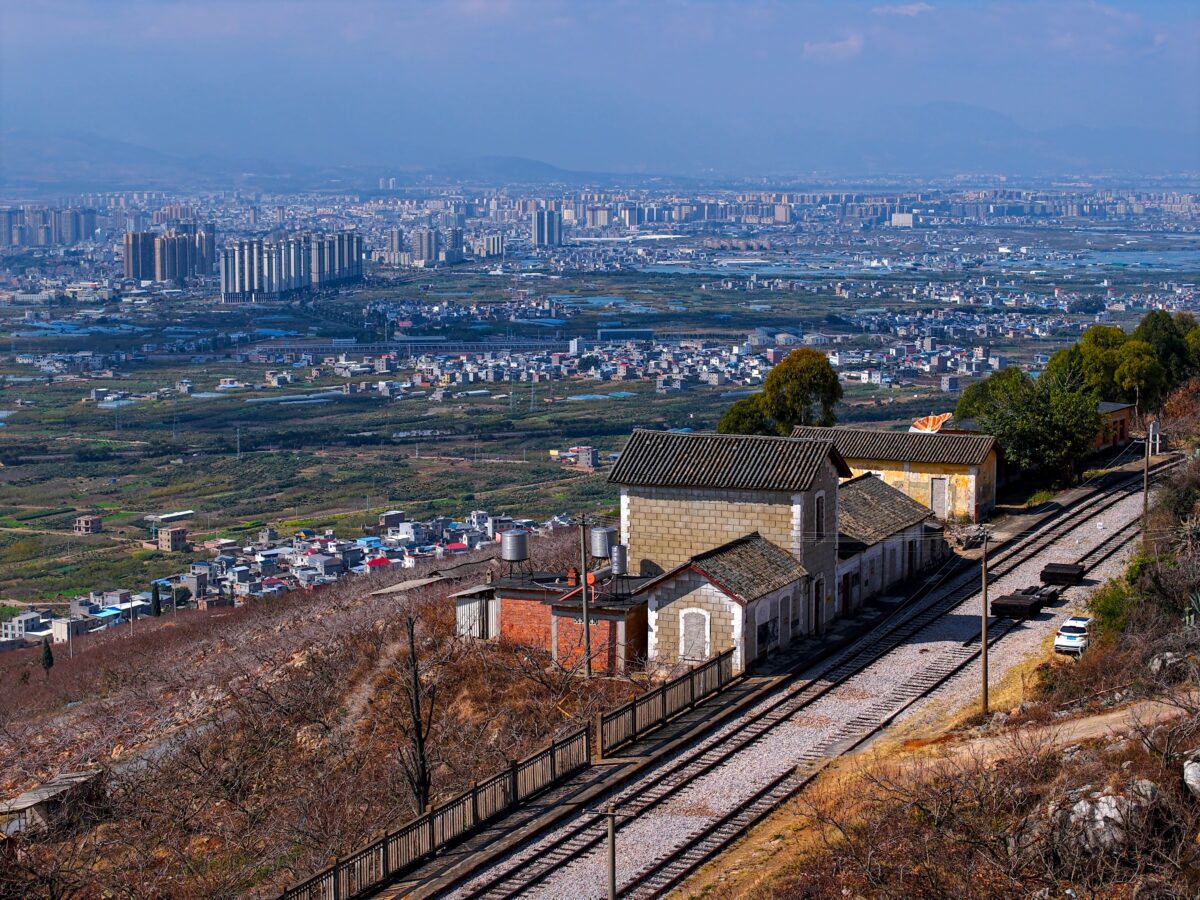
Just 22 km from Bisehzai Train Station lays another Yunnan-Vietnam Railway station, largely unknown even to locals
In northeastern Mengzi (蒙自), agricultural villages and endless greenhouses sprawl across the landscape, blending into the city’s expanding outskirts. The old municipal train station, once a bustling transit hub – where turquoise taxi’s and loud city buses endlessly hauled visitors away – has now been overshadowed by the new high-speed train station, Honghe Station (红河站). Located on the western side of Mengzi, Honghe Station now drives the region’s economic future. The Yunnan-Vietnam Railway, once the fastest form of transportation from Mengzi to Kunming, still lingers as a historical relic, having been eclipsed by today’s modern transportation. Historic stations such as Bisezhai Train Station (碧色寨站), have maintained a beat as a cultural tourism landmark, while others quietly wait to be rediscovered.
Behind Erlong Mountain Temple (二龙山寺), a small monastery tucked along the base of the mountains is a serpentine-like dirt road weaving its way up the mountainside. Mountain bike riders post about the thrilling, rocky-trail on various Chinese social media platforms. Occasionally, a small French-style train station tucked behind rampant shrubbery, higher up on the mountainside, makes an appearance. This is Heilongtan Train Station (黑龙潭站). Apart from having its name labeled on the popular Bisezhai Train Station signage (the next station up north), most locals wouldn’t be able to pinpoint, nor recognize a Heilongtan Train Station.
Honghe Prefecture locals who hear the name Heilongtan Train Station, will usually ask if you’re referring to Xiaolongtan Train Station (小龙潭站), another train station located right outside the limits of the small industrial city of Kaiyuan. Following my own research, I pinpoint Heilongtan Train Station’s exact location and the distinguishable wave-like pattern on my digital map. I embark for a short morning trip.

Nearly 15 km away from Mengzi’s city center, it takes me about 30 minutes to reach the popular serpentine road. Some say the path looks like the Chinese character for countryside (乡), an accurate resemblance after looking at its shape from a distance. Finally, the path begins to level out, an indicator I’ve made it to the top. An intersection made up of an east-west dirt mountain path and the Yunnan-Vietnam Railway train tracks heading north-south, remind travelers that train history runs through the area. Arriving at the intersection, I take a left, walking atop fresh gravel towards a smattering of grey buildings built with what looks to be cinderblocks.
Bisezhai Train Station’s Southern Neighbor
Unlike other more popular stations like Bisezhai, along the Yunnan-Vietnam Railway, there are no tourists or locals snapping away photos. The sounds of crunching gravel, locals shouting at each other, and the humming of an electric generator fill the air. Visiting Heilongtan Train Station would have otherwise been a perfectly peaceful setting.
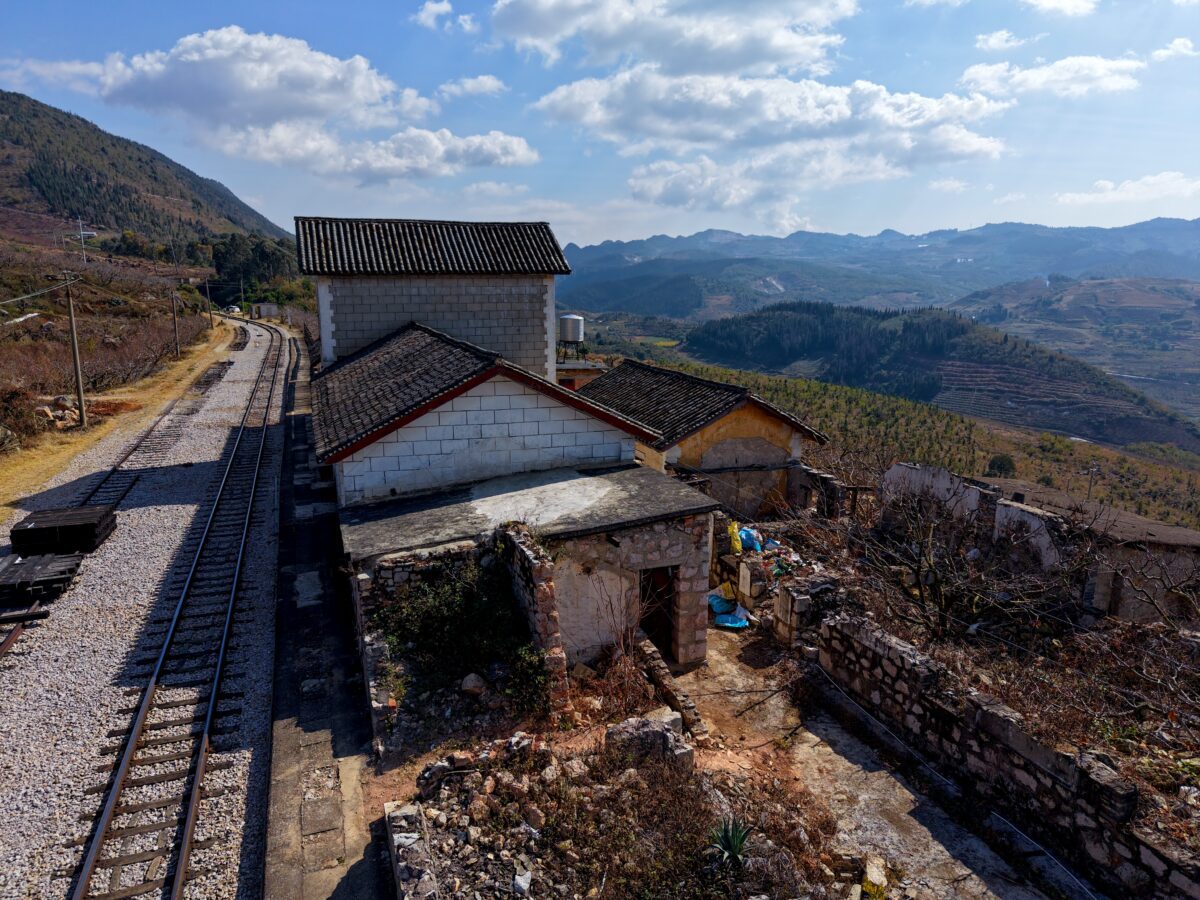
Built in 1909, Heilongtan Train Station is referred to locals as the “Stone Slope Station” (石头破站). According to the Kunming Railway Bureau, Heilongtan Train Station was among the first 34 stations built along the Yunnan-Vietnam Railway, an indicator of the various train stations, starting with Hekou, that are peppered across Honghe Prefecture. The train station’s cliffside location, 1550 meters above, provides a scenic viewpoint where visitors can soak in the cityscape of Mengzi and lush mountains.
An assortment of the original structures are still standing today. This includes the greyish-white train station building and a few French-built bungalows. Directly behind the main station building is one of these French bungalows, still mostly intact. Yet, its windows are filled-in with a solid wall of cement. Similar to Lahadi Train Station in Pingbian County, most of the structures at Heilongtan Train Station’s have had their window sills on up completely filled with cement. The few red metal doors are all shackled tightly together. A few brick buildings, built later on, with water-heaters propped atop their wobbly rooftops make out the remaining structures. Unable to explore the mysteries sealed within, I take a stroll around the other deteriorating cinderblock buildings and walk towards the other French bungalows.
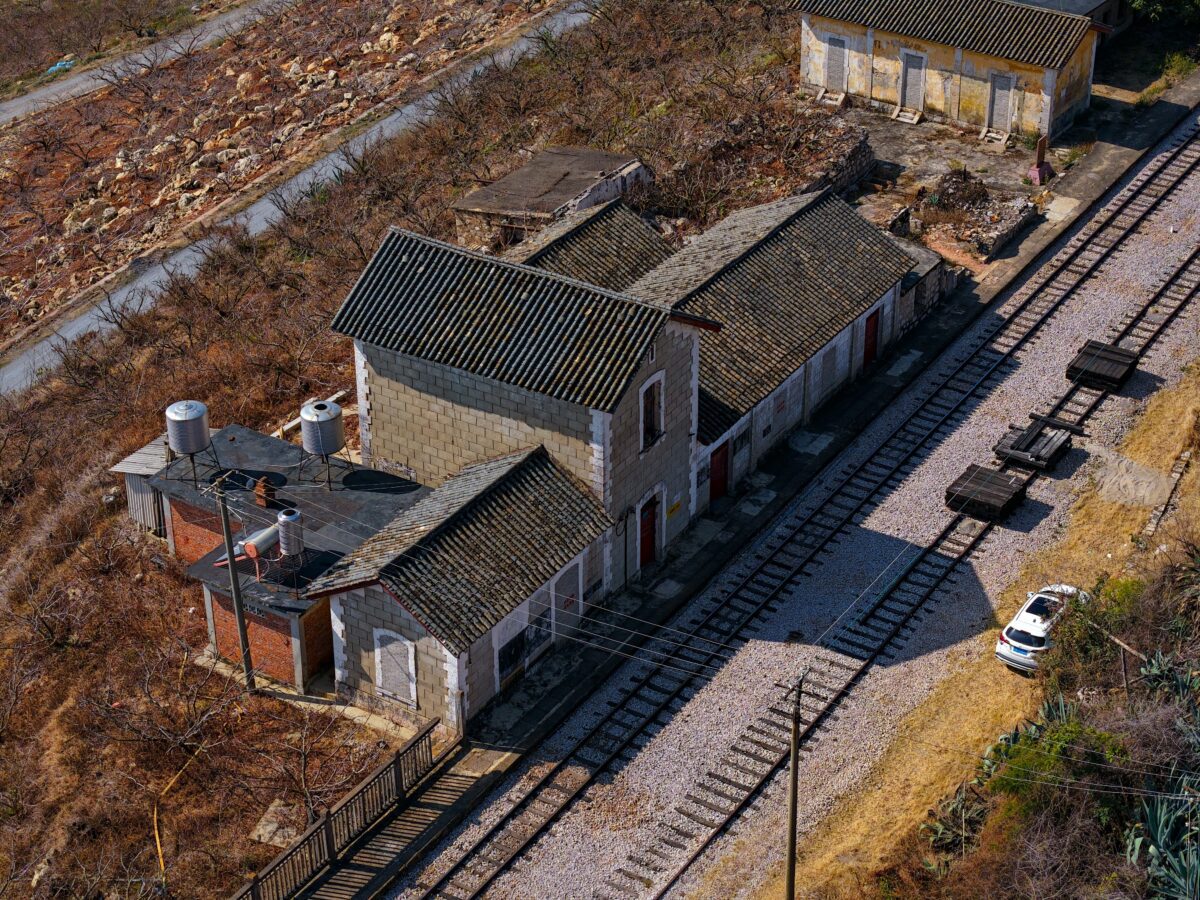
Heilongtan Train Station shut down operations in 2010. Though supply trains still stroll through occasionally, Heilongtan mostly attracts visitors as being the location of the Xiao Dongshan Riot (小东山暴动地). The local government added a plaque in 2014, teaching a small portion of local history to travelers passing through the train station.
Revolutionary Riot
According to the Honghe Prefecture Culture and Tourism Department, Heilongtan Train Station was where the first armed struggle by the Chinese Communist Party against the then-ruling Guomindang Party (国民党) in Yunnan Province occurred. In 1924, the CCP was making inroads and gaining popularity within Yunnan’s rural areas, especially in Mengzi. Eventually, a local farmer’s association which promoted the party’s revolutionary work was established by the local villagers of Xiao Dongshan Village (小东山村), not far from Heilongtan Train Station.
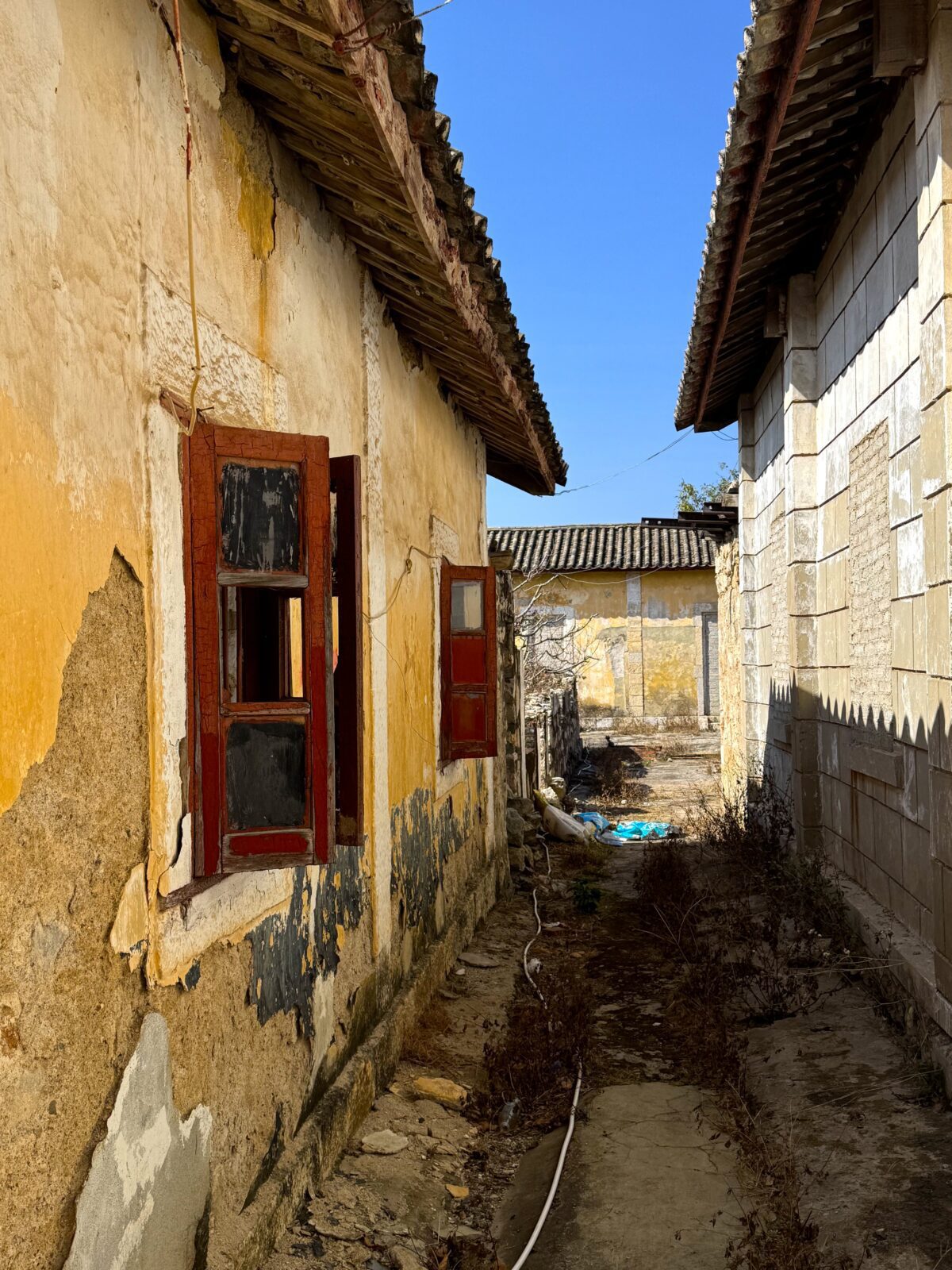
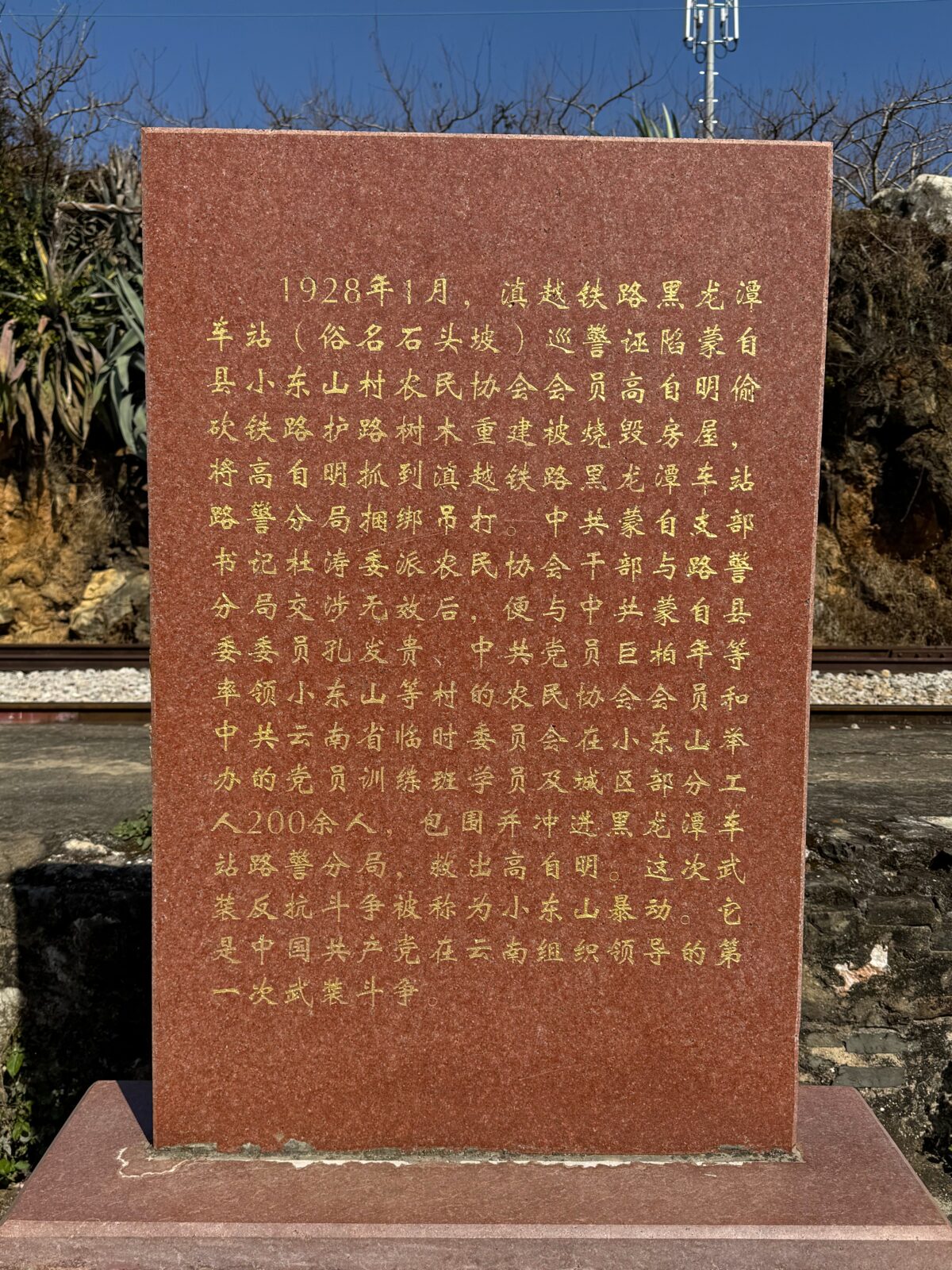
In January of 1928, Gao Zeming, a member of the local farmer’s association’s house burned down. Members of the association helped Gao Zeming rebuild his house. However, a Chinese patrol officer along the Yunnan-Vietnam Railway accused Gao Zeming of stealing limber that belonged to the railway for building parapets. Gao Zeming was arrested, beaten, and subjugated to further investigation.
After unsuccessful negotiations for the release of Gao Zeming, furious villagers from Xiao Dongshan revolted. As a result, more than 200 party members formed a group, fighting under the rallying cry of resisting the bullying of French Imperialism. Armed with a collection of farming tools and small arsenal of guns, the group stormed Heilongtan Train Station. Gao Zeming was successfully rescued.
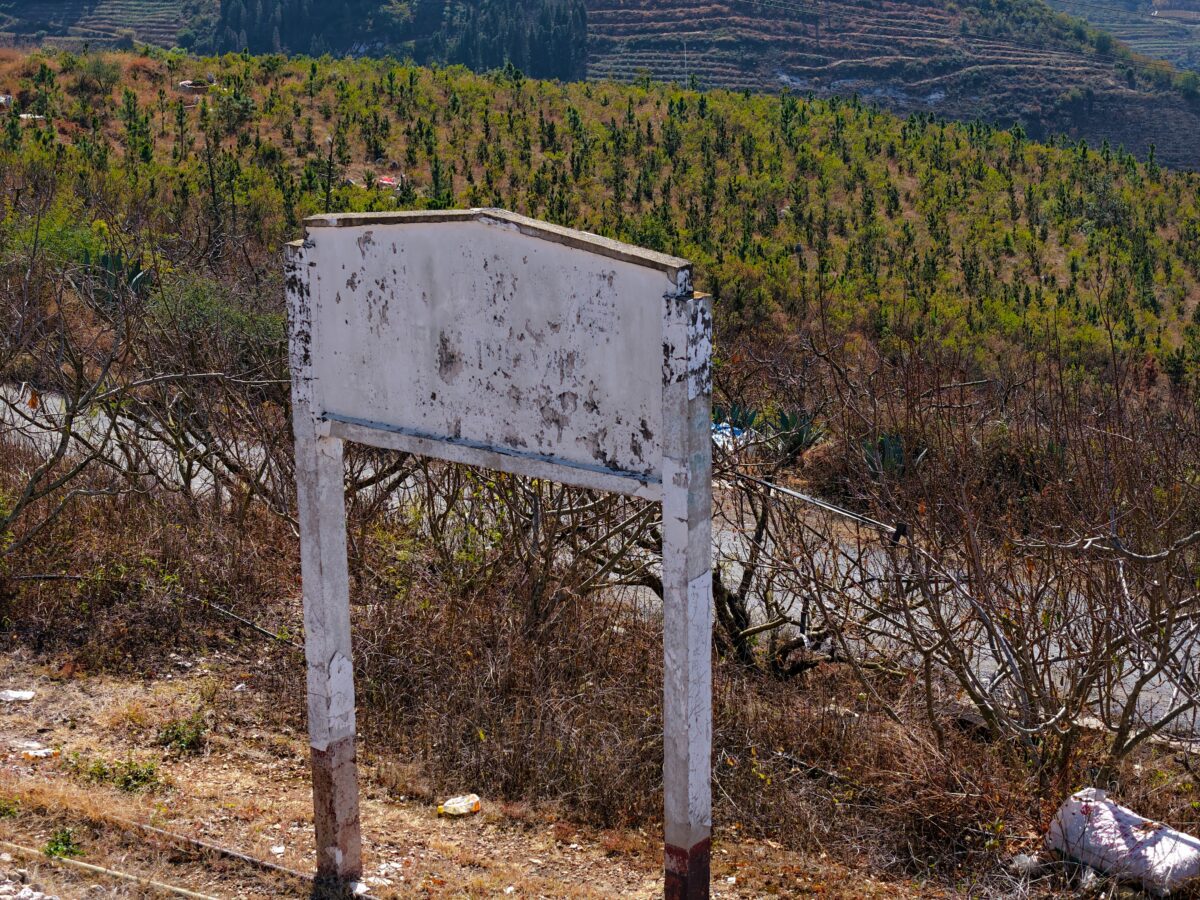
I walk up to one of Heilongtan Train Station’s signage. Its Chinese characters were barely visible. This small train station, tucked away in the distant hills of Mengzi and just 22 kilometers from the bustling Bisezhai Train Station, has its own story to tell. Whether it ever reaches the same level of recognition as other train stations along the Yunnan-Vietnam Railway is beyond the point. What matters is that visitors pause, take in its quiet beauty, and recognize the history it still holds.

